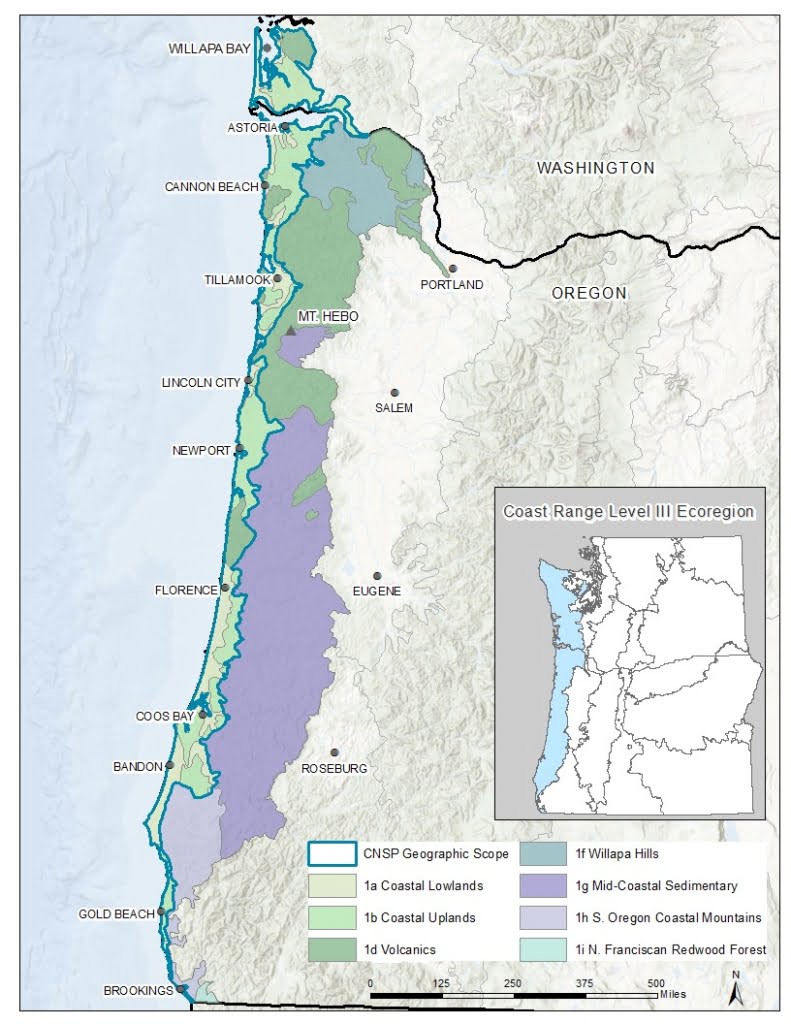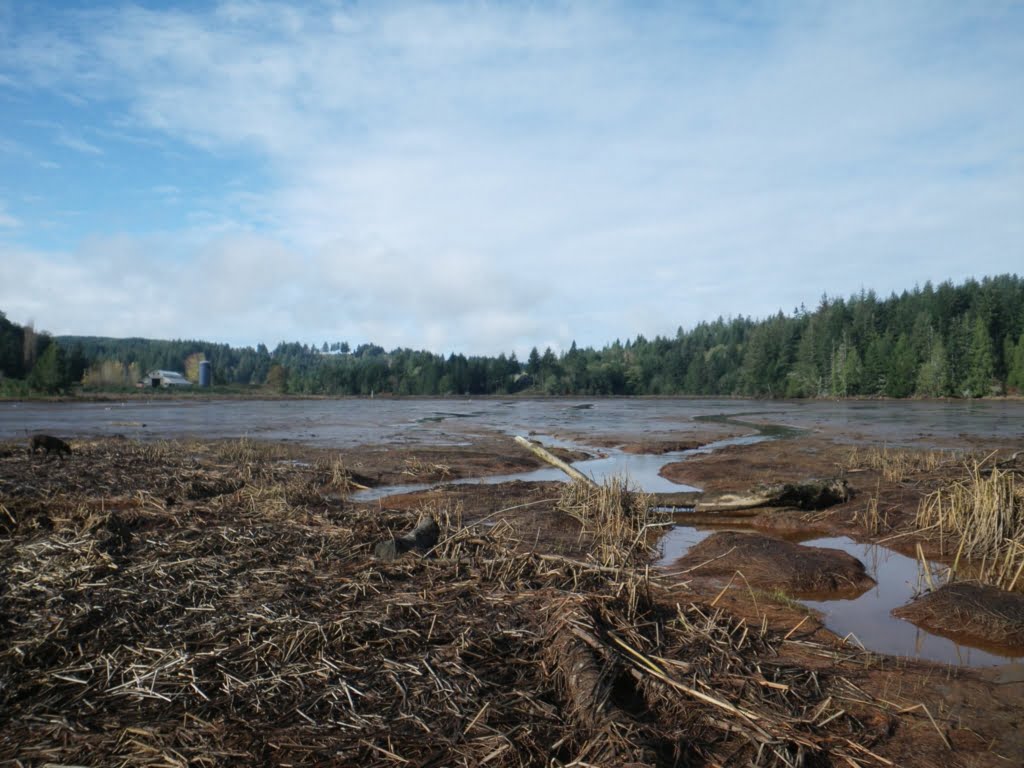Pacific Northwest Coastal Ecosystems
Coastal ecosystems are among the rarest and most impacted ecosystems in the Pacific Northwest. As a result, threatened species like the Oregon silverspot butterfly (Speyeria zerene hippolyta) (OSB), Coho salmon (Oncorhynchus kisutch), western snowy plover (Charadrius nivosus nivosus), streaked horned lark (Eremophila alpestris strigata), and other plant and animal species that make their home in these habitats are greatly imperiled. The coastal meadows that were once prevalent in coastal dunes and headlands (where Oregon silverspot butterflies, western snowy plovers, and streaked horned larks are found) have been lost to commercial and residential development and to the invasion of European and American beachgrass (Ammophila arenaria and A. breviligulata). As much as 90 percent of coastal dune habitat has been altered in the last 100 years (Oregon Conservation Strategy 2016). Roughly 85 percent of estuarine habitats have been lost in this same period, impacted by development and changes to hydrologic flow from dredging and the construction of dikes and water-diversion structures (Brophy et. al. 2019). Oregon estuaries and wetlands provide critical habitat for at-risk species such as Oregon Coast Coho salmon, Chinook salmon (Oncorhynchus tshawytscha), and migratory birds along the Pacific Flyway. Beyond current and historic land use impacts, the anticipated effects on coastlines from global climate change such as sea level rise, catastrophic flooding, coastal erosion, and rising stream temperatures pose added risks to these ecosystems.
A large and diverse group of partners, including public land managers, restorationists, and private landowners, are working to restore these sensitive and imperiled coastal habitats. However, the return of ecosystem function and recovery of at-risk species that depend on coastal meadows and wetlands is only possible with the restoration of diverse, native plant communities found in those systems. Large-scale habitat restoration in coastal meadows and wetlands on the Oregon Coast is limited by the lack of diverse, genetically appropriate, native seed. Demand for genetically appropriate, native seed for coastal restoration projects exceeds availability. Efforts to produce high-quality coastal native plant materials have largely focused on woody material, typically container trees and shrubs. To date, much of the native seed has been collected by hand in small quantities, a costly and labor-intensive process. While coastal land managers and restoration partners have individually collected wild seed and put some species into small-scale seed production, there has not been a coordinated effort to produce native seed for restoration efforts on the coast.



